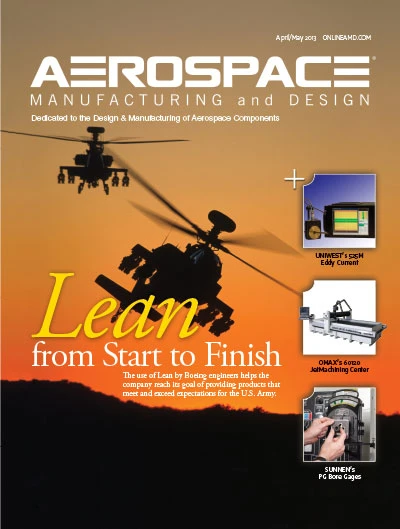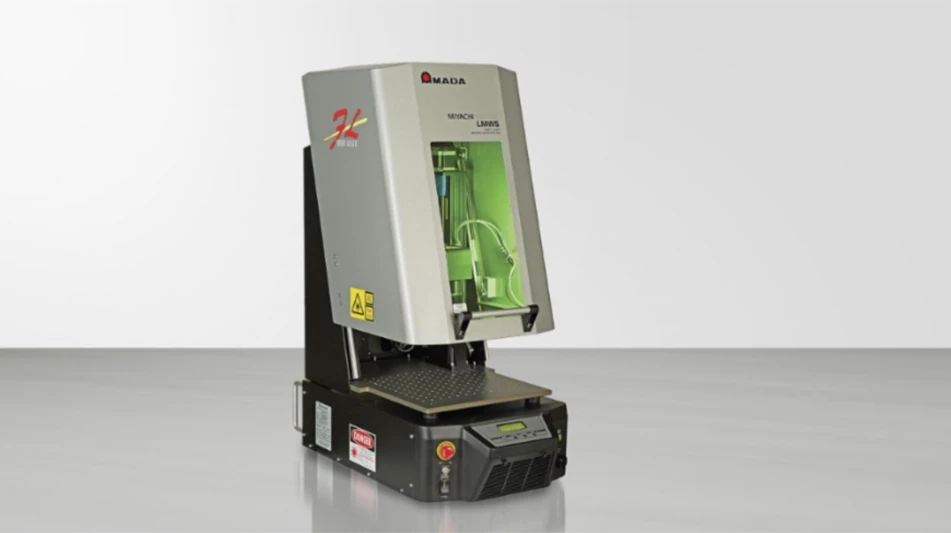 Research engineers Warren Lee (left) and Mike Heiges adjust GTRI’s Airborne Unmanned Sensor System (GAUSS), a UAV with a 13.6ft wingspan that is being used as an airborne test bed for sensing devices. Credit: Gary Meek Research engineers Warren Lee (left) and Mike Heiges adjust GTRI’s Airborne Unmanned Sensor System (GAUSS), a UAV with a 13.6ft wingspan that is being used as an airborne test bed for sensing devices. Credit: Gary Meek |
A research team at the Georgia Tech Research Institute (GTRI) is developing airborne testing capability for sensors, communications devices, and other airborne payloads. This aerial test bed, called the GTRI Airborne Unmanned Sensor System (GAUSS), is based on an unmanned aerial vehicle (UAV) made by Griffon Aerospace and modified by the GTRI.
“Developing new sensor technologies that can be effectively employed from the air is a priority today given the rapidly increasing use of unmanned aircraft,” says Michael Brinkmann, a GTRI principal research engineer who is leading the work. “Given suitable technology, small UAVs can perform complex, low-altitude missions effectively and at lower cost. The GAUSS system gives GTRI and its customers the ability to develop and test new airborne payloads in a rapid, cost-effective way.”
The current project includes development, installation, and testing of a sensor suite relevant to many of GTRI’s customers. This suite consists of a camera package; a signals intelligence package for detecting and locating ground-based emitters; and multi-channel, ground-mapping radar.
The radar is being designed using phased-array antenna technology that enables electronic scanning, allowing more flexibility and agility than traditional mechanically steered antennas.
The combined sensor package is lightweight enough to be carried by the GAUSS UAV, which is a variant of the Griffon Outlaw ER aircraft, and has a 13.6ft wingspan and a payload capacity of approximately 40 lb.
The aircraft navigates using a high precision global positioning system (GPS) combined with an inertial navigation system. These help guide the UAV, which can be programmed for autonomous flight or piloted manually from the ground. The airborne mission package also includes multi-terabyte onboard data recording and a stabilized gimbal that isolates the camera from aircraft movement.
Heavier sensor designs have several disadvantages, observes Mike Heiges, a principal research engineer who leads the GTRI team responsible for flying and maintaining the UAV platform. Larger sensors require larger unmanned aircraft to carry them, and those aircraft use bigger engines and must fly higher to avoid detection.
 The GTRI Airborne Unmanned Sensor System (GAUSS) is used to evaluate sensing devices in airborne testing. The unmanned aerial vehicle, manufactured by Griffon Aerospace and modified by GTRI, has a wingspan of 13.6ft and can carry a 40 lb payload. Credit: Gary Meek The GTRI Airborne Unmanned Sensor System (GAUSS) is used to evaluate sensing devices in airborne testing. The unmanned aerial vehicle, manufactured by Griffon Aerospace and modified by GTRI, has a wingspan of 13.6ft and can carry a 40 lb payload. Credit: Gary Meek |
“Rather than have your design spiral upwards until you are using very large and expensive aircraft, smaller sensors allow the use of smaller aircraft,” Heiges says. “A smaller UAV saves money and is logistically easier to support. But most important, it can gather information closer to the tactical level on the ground, where it is arguably most valuable.”
Developed by the GTRI team is a modular design that allows reconfiguration of the GAUSS platform for a number of sensor types. Among the possibilities for evaluation are devices that utilize light detection and ranging (LIDAR) technology and chemical-biological sensing technology.
“The overall concept for the GAUSS program is that the airplane itself will be simply a conveyance, and we can mount on it whatever sensor/communication package is required,” Brinkmann says.
The radar package that GTRI is currently installing and testing is complex, he explains. In addition to phased-array scanning capability, the radar operates in the X-band, is capable of five acquisition modes, and can be programmed to transmit arbitrary waveforms.
“This radar is a very flexible system that will be able to do ground mapping, as well as detecting and tracking objects moving around on the ground,” Brinkmann says. “These multiple sensing capabilities offer many possibilities for defense operations, along with search-and-rescue and disaster-recovery operations.”
Possible applications include using the signals intelligence package to locate people buried in rubble by searching for cell phone signals, he says. In another scenario, a group of self-guided UAVs could be used to create an ad hoc cell phone network. That application could be potentially valuable in a post-disaster scenario where existing cell phone towers have been disabled, as happened after Hurricane Katrina, the Haiti earthquake and other events.
“The GAUSS platform is extremely helpful for proof-of-principle development and testing new concepts for airborne sensors,” Brinkmann says. “It gives GTRI a convenient and flexible base from which to pursue significant research in a variety of disciplines.”
Georgia Tech Research Institute
Atlanta, Ga.
www.gatech.edu
Get curated news on YOUR industry.
Enter your email to receive our newsletters.
Explore the May June 2013 Issue
Check out more from this issue and find your next story to read.
Latest from Aerospace Manufacturing and Design
- GE Aerospace secures Air Force engine contract
- Thomson Industries' online sizing and selection tool
- #53 - Manufacturing Matters - 2024 Leaders in Manufacturing Roundtable
- Join us for insights on one of the hottest topics in manufacturing!
- You can still register for March’s Manufacturing Lunch + Learn!
- Ohio creates Youngstown Innovation Hub for Aerospace and Defense
- Tormach’s Chip Conveyor Kit for the 1500MX CNC Mill
- How to Reduce First Article Inspection Creation Time by 70% to 90% with DISCUS Software






